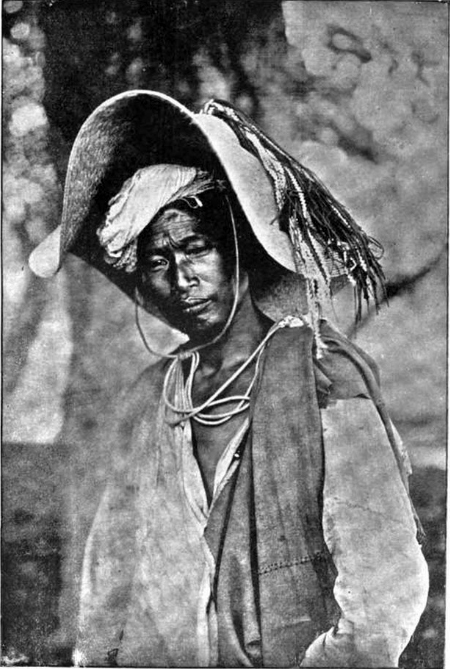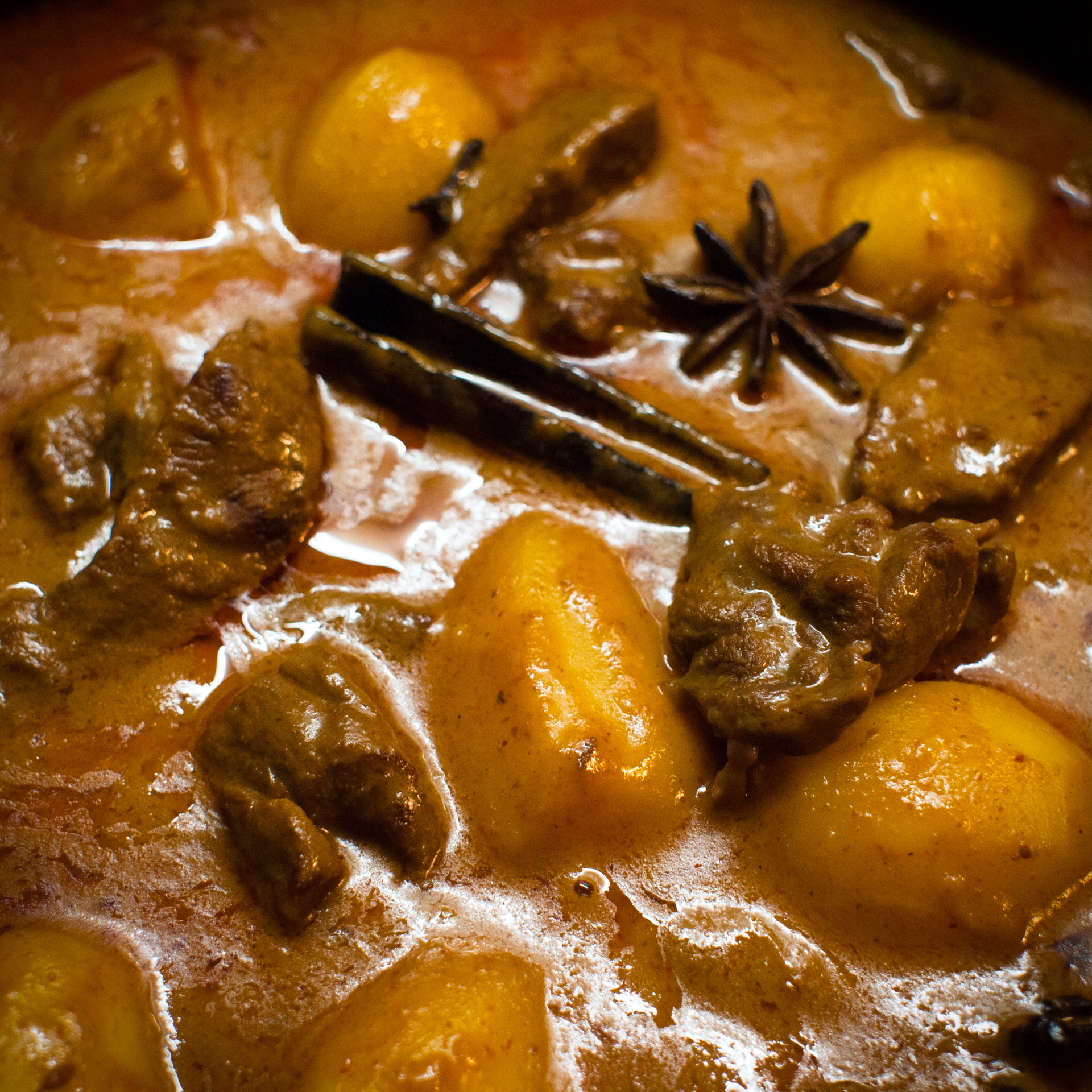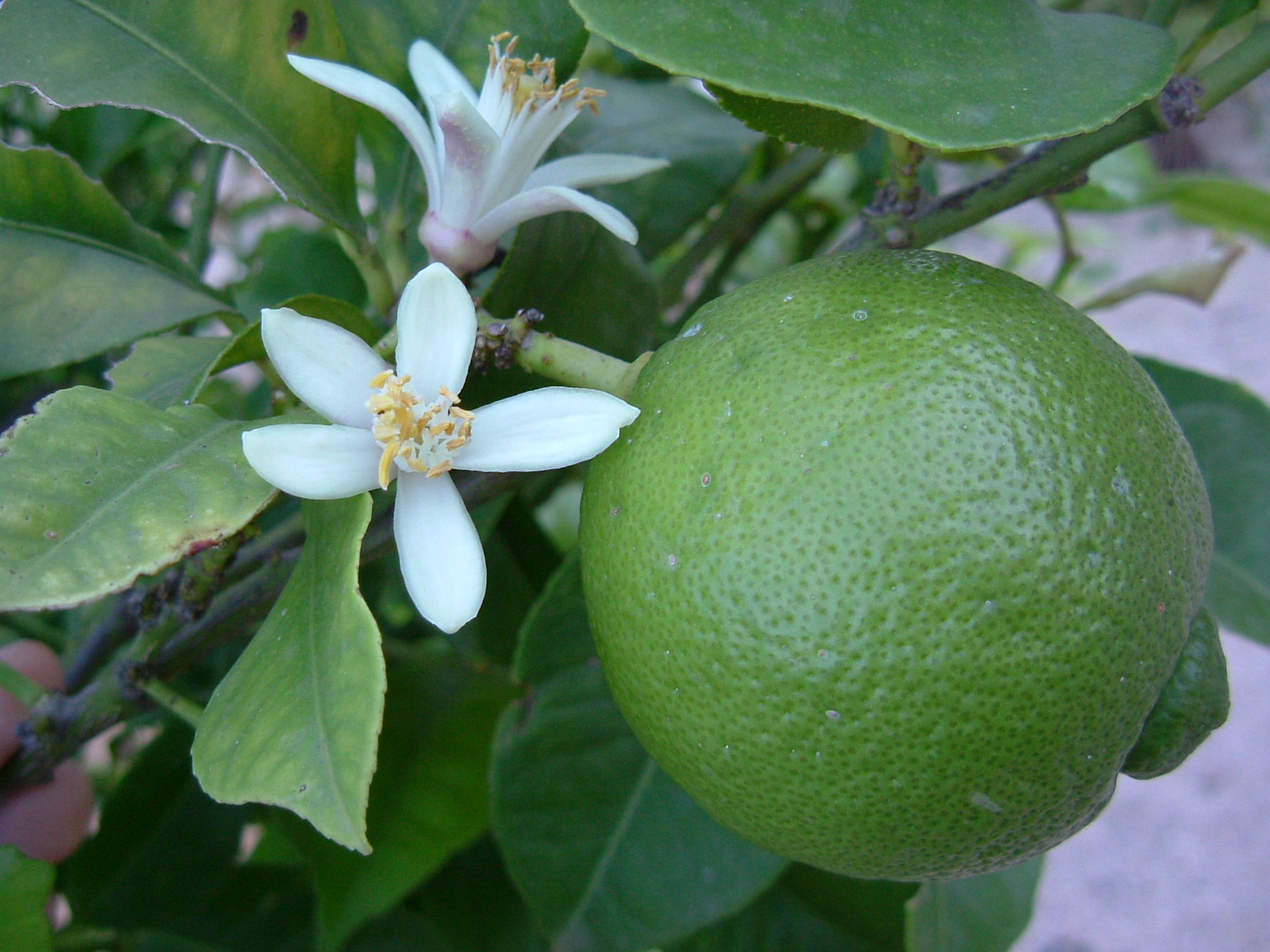|
Khao Soi
''Khao soi'' or ''khao soy'' (, ; , ; , ; , ; , ) is a Chin Haw dish served in Laos and northern Thailand. A comparable dish, ''ohn no khao swè'', is widely served in Myanmar. In Myanmar, it is known as "khao swè", an adaptation of the original name. Traditionally, the dough for the wheat noodles is spread out on a cloth stretched over boiling water. After steaming, the sheet noodles are rolled and cut with scissors. The dish is believed to have evolved from Chinese Muslim traders who plied the Spice trade, spice route when what is now modern-day northern Thailand was controlled by the Burmese. Lao khao soi is traditionally made with hand-sliced rice noodles in clear broth and topped with minced pork. In some markets in Luang Namtha and Muang Sing, vendors still hand-cut the noodles. These traditionally cut noodles can also be found in several places in northern Thailand. Versions There are several common versions of khao soi: *''Lao ''khao soi is completely different and ... [...More Info...] [...Related Items...] OR: [Wikipedia] [Google] [Baidu] |
Thai Cuisine
Thai cuisine (, , ) is the national cuisine of Thailand. Thai cooking places emphasis on lightly prepared dishes with aromatics and spicy heat. The Australian chef David Thompson (chef), David Thompson, an expert on Thai food, observes that unlike many other cuisines, Thai cooking is "about the juggling of disparate elements to create a harmonious finish. Like a complex musical chord it's got to have a smooth surface but it doesn't matter what's happening underneath. Simplicity isn't the dictum here, at all." Traditional Thai cuisine loosely falls into four categories: ''tom'' (boiled dishes), ''yam'' (spicy salads), ''tam'' (pounded foods), and ''kaeng'' (curries). Deep-frying, stir-frying and steaming are methods introduced from Chinese cuisine. In 2011, seven Thai dishes appeared on a list of the "World's 50 Best Foods", an online poll of 35,000 people worldwide by ''CNN Travel''. Thailand had more dishes on the list than any other country: tom yum kung (4th), pad thai (5 ... [...More Info...] [...Related Items...] OR: [Wikipedia] [Google] [Baidu] |
Chiang Mai Province
Chiang Mai is the largest Provinces of Thailand, province (''changwat'') of Thailand by area. It lies in Northern Thailand#Regional classification of northern Thailand, upper northern Thailand and has a population of 1.78 million people. It is bordered by Chiang Rai province, Chiang Rai to the northeast, Lampang province, Lampang and Lamphun province, Lamphun to the south, Tak province, Tak to the southwest, Mae Hong Son province, Mae Hong Son to the west, and Shan State of Burma to the north. The capital, Chiang Mai, is north of Bangkok. Geography Chiang Mai province is about from Bangkok in the Ping River, Mae Ping River basin and is on average at elevation. Surrounded by the mountain ranges of the Thai highlands, it covers an area of approximately . The mountains of the Daen Lao Range () at the north end of the province, the Thanon Thong Chai Range () with the highest mountain in Thailand, Doi Inthanon at , stretching in a north–south direction, and the Khun Tan Range ... [...More Info...] [...Related Items...] OR: [Wikipedia] [Google] [Baidu] |
Luang Prabang
Luang Prabang (Lao language, Lao: wikt:ຫຼວງພະບາງ, ຫຼວງພະບາງ, pronounced ), historically known as Xieng Thong (ຊຽງທອງ) and alternatively spelled Luang Phabang or Louangphabang, is the capital of Luang Prabang province, Luang Prabang Province in north-central Laos. Its name, meaning “Royal Buddha Image,” derives from the Phra Bang, a statue symbolizing Lao sovereignty. Designated a World Heritage Site, UNESCO World Heritage Site in 1995, the city is recognized for blending traditional Lao architecture, European colonial buildings, and over 30 Buddhist temples. The protected area encompasses 33 of its 58 villages, where daily rituals like the morning alms-giving ceremony persist. [...More Info...] [...Related Items...] OR: [Wikipedia] [Google] [Baidu] |
Shan People
The Shan people (, , or , ), also known as the Tai Long (တႆးလူင်, ) or Tai Yai, are a Tai ethnic group of Southeast Asia. The Shan are the biggest minority of Burma (Myanmar) and primarily live in the Shan State, but also inhabit parts of Mandalay Region, Kachin State, Kayah State, Sagaing Region and Kayin State, and in adjacent regions of China ( Dai people), Laos, Assam and Meghalaya (Ahom people), Cambodia ( Kula people), Vietnam and Thailand. Though no reliable census has been taken in Burma since 1935, the Shan are estimated to number 4–6 million, with CIA Factbook giving an estimate of five million spread throughout Myanmar which is about 10% of the overall Burmese population. 'Shan' is a generic term for all Tai-speaking peoples within Myanmar (Burma). The capital of Shan State is Taunggyi, the fifth-largest city in Myanmar with about 390,000 people. Other major cities include Thibaw (Hsipaw), Lashio, Kengtung and Tachileik. Etymology The Sha ... [...More Info...] [...Related Items...] OR: [Wikipedia] [Google] [Baidu] |
Halal
''Halal'' (; ) is an Arabic word that translates to in English. Although the term ''halal'' is often associated with Islamic dietary laws, particularly meat that is slaughtered according to Islamic guidelines, it also governs ethical practices in business, finance (such as the prohibition of interest or ''riba''), and daily living. It encompasses broader ethical considerations, including fairness, social justice, and the treatment of animals. The concept of ''halal'' is central to Islamic practices and is derived from the Quran and the Sunnah (the teachings and practices of the Prophet Muhammad). In the Quran, the term ''halal'' is contrasted with the term ''haram'' (). The guidelines for what is considered ''halal'' or ''haram'' are laid out in Islamic jurisprudence (''fiqh''), and scholars interpret these guidelines to ensure compliance with Islamic principles. This binary opposition was elaborated into a more complex classification known as "Ahkam, the five decisions": Fard, ... [...More Info...] [...Related Items...] OR: [Wikipedia] [Google] [Baidu] |
Shan State
Shan State (, ; , ) is a administrative divisions of Myanmar, state of Myanmar. Shan State borders China (Yunnan) to the north, Laos (Louang Namtha Province, Louang Namtha and Bokeo Provinces) to the east, and Thailand (Chiang Rai Province, Chiang Rai, Chiang Mai Province, Chiang Mai and Mae Hong Son Provinces) to the south, and five administrative divisions of Myanmar in the west (Kachin State, Mandalay Region, Kayin State, Kayah State, and Sagaing Region). The largest of the 14 administrative divisions by land area, Shan State covers 155,800 km2, almost a quarter of the total area of Myanmar. The state gets its name from the Burmese name for the Tai peoples: "Shan people". The Tai (Shan) constitute the majority among several ethnic groups that inhabit the area. Shan State is largely rural, with only three cities of significant size: Lashio, Kengtung, and the capital, Taunggyi. Taunggyi is northeast of the nation's capital Naypyitaw. The Shan state, with many ethnic groups ... [...More Info...] [...Related Items...] OR: [Wikipedia] [Google] [Baidu] |
Islam In China
Islam has been practiced in China since the 7th century CE.. There are an estimated 17–25 million Muslims in China, less than 2 percent of the total population. Though Hui people, Hui Muslims are the most numerous group, the greatest concentration of Muslims reside in northwestern China's Xinjiang autonomous region, which contains a significant Uyghurs, Uyghur population. Lesser yet significant populations reside in the regions of Ningxia, Gansu and Qinghai. Of Ethnic minorities in China, China's 55 officially recognized minority peoples, ten of these groups are predominantly Sunni Islam, Sunni Muslim. History The Silk Road, which comprised a series of extensive inland trade routes that spread all over the Mediterranean to East Asia, was used since 1000 BCE and continued to be used for millennia. For more than half of this long period of time, most of the traders were Muslim and moved towards the East. Not only did these traders bring their goods, they also carried with the ... [...More Info...] [...Related Items...] OR: [Wikipedia] [Google] [Baidu] |
Thai People
Thai people, historically known as Siamese people, are an ethnic group native to Thailand. In a narrower and ethnic sense, the Thais are also a Tai peoples, Tai ethnic group dominant in Central Thailand, Central and Southern Thailand (Siam proper). Part of the larger Tai ethno-linguistic group native to Southeast Asia as well as Southern China, Thais speak the Sukhothai languages (Thai language, Central Thai and Southern Thai language), which is classified as part of the Kra–Dai languages, Kra–Dai family of languages. The majority of Thais are followers of Theravada Buddhism. Thai cultural mandates, Government policies during the late 1930s and early 1940s resulted in the successful forced assimilation of various ethno-linguistic groups into the country's dominant Central Thai language and culture, leading to the term ''Thai people'' to come to refer to the Demographics of Thailand, population of Thailand overall. This includes other subgroups of the Tai ethno-linguistic grou ... [...More Info...] [...Related Items...] OR: [Wikipedia] [Google] [Baidu] |
Massaman Curry
Massaman curry (, , ) is a rich, flavourful, and mildly spicy Thai curry. It is a Fusion cuisine, fusion dish, combining ingredients from three sources: Persia, the Indian Subcontinent, and the Malay Archipelago (e.g., cardamom, cinnamon, cloves, star anise, cumin, bay leaf, bay leaves, nutmeg, and Mace (spice), mace) with ingredients more commonly used in native Thai cuisine (e.g., chili peppers, coriander, lemongrass, galangal, white pepper, shrimp paste, shallots, and garlic) to make massaman curry paste. The substance of the dish is usually based on chicken, potatoes, onions, and peanuts. The richness comes from the coconut milk and cream used as a base, as for many Thai curries. Description Due to its Muslim roots and therefore Islamic dietary laws, this curry is most commonly made with Chicken meat, chicken, but there are also variations on this dish using Duck (food), duck, beef, venison, mutton, Goat meat, goat, or rarely, pork. As pork is ''haram'' (forbidden) in Islam, th ... [...More Info...] [...Related Items...] OR: [Wikipedia] [Google] [Baidu] |
Coconut Milk
Coconut milk is a plant milk extracted from the grated pulp of mature coconuts. The opacity and rich taste of the milky-white liquid are due to its high oil content, most of which is saturated fat. Coconut milk is a traditional food ingredient used in Southeast Asia, Oceania, South Asia, and East Africa. It is also used for cooking in the Caribbean, Central America, northern parts of South America and West Africa, where coconuts were introduced during the colonial era. Coconut milk is differentiated into subtypes based on fat content. They can be generalized into coconut cream (or thick coconut milk) with the highest amount of fat; coconut milk (or thin coconut milk) with a maximum of around 20% fat; and coconut skim milk with negligible amounts of fat. This terminology is not always followed in commercial coconut milk sold in Western countries. Coconut milk can also be used to produce milk substitutes (differentiated as "coconut milk beverages"). These products are not ... [...More Info...] [...Related Items...] OR: [Wikipedia] [Google] [Baidu] |
Lime (fruit)
A lime is a citrus fruit, which is typically round, lime (color), lime green in colour, in diameter, and contains acidic juice vesicles. There are several species of citrus trees whose fruits are called limes, including the Key lime (''Citrus aurantiifolia''), Persian lime, kaffir lime, finger lime, blood lime, and Citrus glauca, desert lime. Limes are a rich source of vitamin C, are sour, and are often used to accent the flavours of foods and beverages. They are grown year-round. Plants with fruit called "limes" have diverse genetic origins; limes do not form a monophyletic group. The term ''lime'' originated in other languages (from French language, French , from Arabic , from Persian language, Persian , ). Plants known as "lime" The difficulty in identifying exactly which species of fruit are called lime in different parts of the English-speaking world (the same problem applies to synonyms in other European languages) is increased by the botanical complexity of the ''Citru ... [...More Info...] [...Related Items...] OR: [Wikipedia] [Google] [Baidu] |
Shallots
The shallot is a cultivar group of the onion. Until 2010, the (French red) shallot was classified as a separate species, ''Allium ascalonicum''. The taxon was synonymized with ''Allium cepa'' (the common onion) in 2010, as the difference was too small to justify a separate species. As part of the onion genus ''Allium'', its close relatives include garlic, scallions, leeks, chives, and the Chinese onion. Etymology and names The names ''scallion'' and ''shallot'' are derived from the Old French ''eschalotte'', by way of ''eschaloigne'', from the Latin ''Ascalōnia caepa'' or Ascalonian onion, a ''Ascalōnia caepa'' or Ascalonian onion, a namesake of the ancient city of Ascalon. The term ''shallot'' is usually applied to the French red shallot (''Allium cepa'' var. ''aggregatum'', or the ''A. cepa'' Aggregatum Group). It is also used for the Persian shallot or ''musir'' (''A. stipitatum'') from the Zagros Mountains in Iran and Iraq, and the French gray shallot ('' Allium oscha ... [...More Info...] [...Related Items...] OR: [Wikipedia] [Google] [Baidu] |








